Garage door cables are crucial components in the mechanism that allows the door to be lifted and lowered efficiently through the action of torsion springs. These cables work under high tension, distributing the door’s weight and enabling smooth, controlled operation.
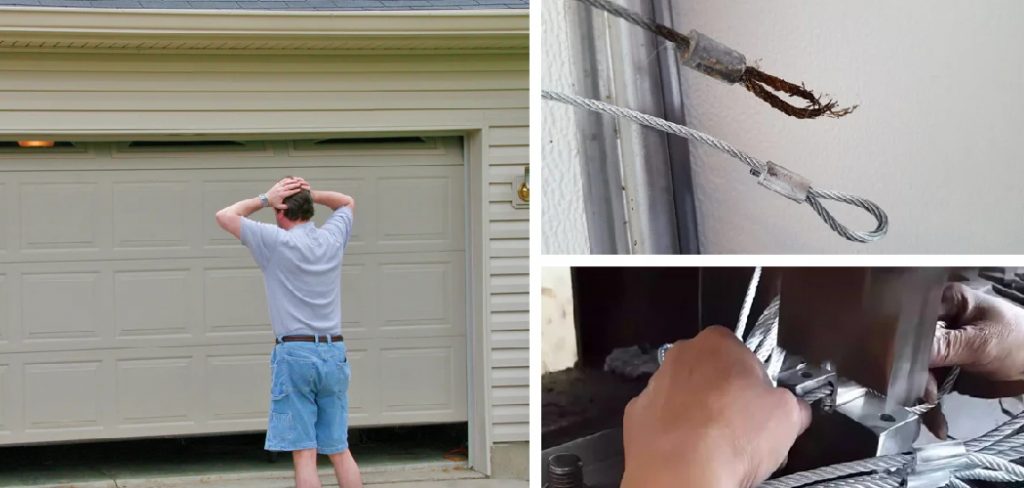
When a garage door cable breaks, it can render the door nearly immobile, presenting a significant challenge, particularly when trying to navigate how to open garage door with broken cable from outside. The added weight and lack of spring assistance can lead to malfunction and potential safety hazards if not addressed properly.
This article aims to provide detailed instructions and safety guidelines for opening a garage door with a broken cable from the outside. Readers can safely access their garage while awaiting professional repair services to restore full functionality by focusing on the emergency release mechanism and manual handling techniques.
Understanding How Garage Door Systems Work
Garage door systems are made up of several key components that work together to ensure smooth and efficient operation. Torsion Springs play a crucial role by providing the necessary force to lift the door, counterbalancing its weight. These springs are tightly wound, storing energy that allows the door to move up and down seamlessly. Complementing the springs are the Cables, which assist in guiding and supporting the door’s movement. These cables endure significant tension and wear as they work alongside the springs.
Another essential element is the Tracks and Rollers, which guide the door’s path as it opens and closes, ensuring it remains aligned and stable. Understanding these components helps in recognizing potential issues when troubleshooting.
Cables can break due to several reasons, with Common Causes including regular wear and tear over time, corrosion due to exposure to moisture, or damage from obstructions within the tracks that disrupt normal operation. A broken cable often results in an unbalanced door, heightening the risk of manual operation. This imbalance can make handling dangerous, increasing the likelihood of accidents or further damage to the door system. It highlights why professional intervention is recommended to safely address any issues with the cables.
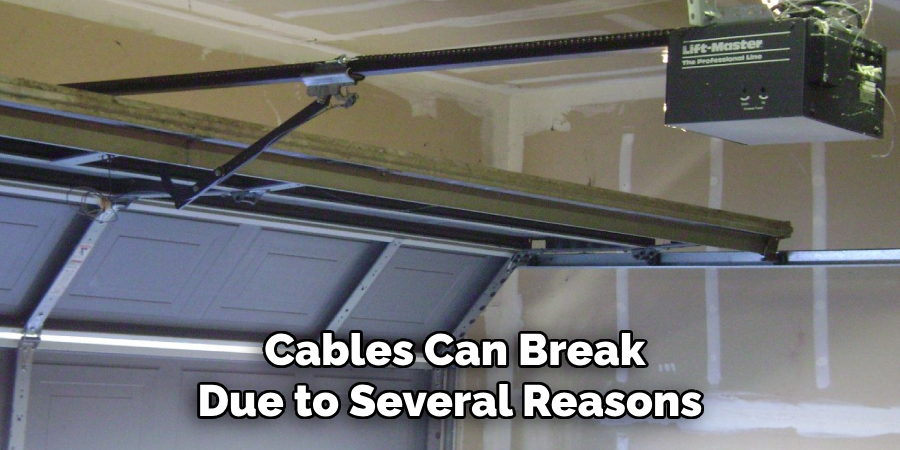
Tools and Materials Needed
When preparing to open a garage door with a broken cable from the outside, having the right tools and materials ensures a safer and more efficient process. Here are some essentials:
Essential Tools
- Pliers: Useful for gripping and manipulating components when performing manual adjustments.
- Adjustable Wrench: Necessary for tightening or loosening bolts and other fittings.
- Flathead Screwdriver: Helpful for prying and adjusting small parts if needed.
- Ladder: Provides access to higher sections of the door or mechanisms.
Optional Tools
- Lock Picking Tool or Bump Key: If the garage door lock cannot be opened conventionally, these tools can help you access the lock safely.
Safety Equipment
- Heavy-duty Gloves: Protect hands from sharp edges or components that may shift suddenly.
- Safety Glasses: Shield eyes from debris or parts that might move unexpectedly during repairs.

Equipping yourself with these tools and safety gear can significantly reduce risks and help secure the garage door while waiting for professional assistance.
How to Open Garage Door with Broken Cable from Outside: Step-by-Step Guide
A. Locate the Emergency Release Mechanism
Step 1: Find the Emergency Release: Begin by locating the emergency release cord, which is typically hanging from the door’s track inside your garage. In cases where the garage door features an exterior emergency release kit, look for a small keyhole on the outside of the door.
Step 2: Insert the Key: If your door is equipped with an emergency lock kit, insert the key into the exterior keyhole and turn it to unlock the emergency release mechanism. This will enable you to proceed with manual operations.
Step 3: Pull the Release Cord: Pull the emergency release cord once the lock is disengaged. This action disconnects the door from the automatic garage door opener, allowing you to manually control the door’s movement without the assistance of motorized functions.
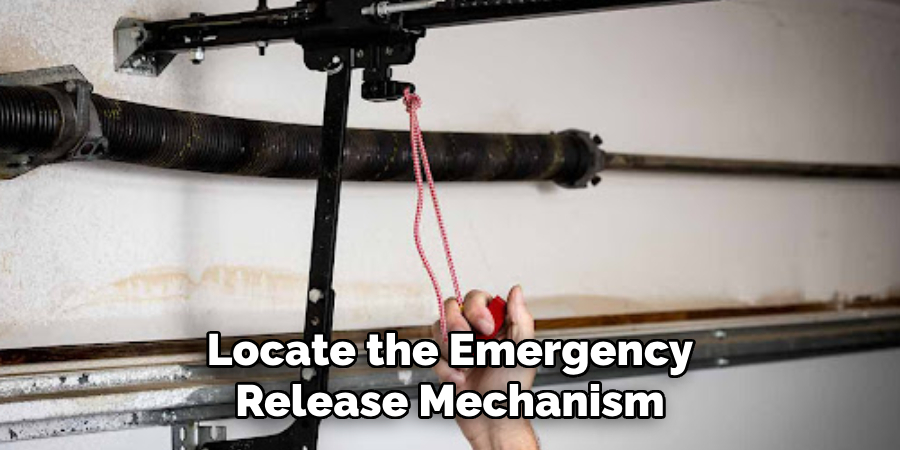
B. Manually Lift the Garage Door
Step 1: Position Yourself Correctly: Stand squarely in front of the garage door. Place your hands evenly on the bottom section of the door for a balanced grip that facilitates lifting.
Step 2: Lift Slowly: Begin to lift the door slowly and steadily. Be aware that the door may feel heavier than usual due to the absence of tension from the broken cable and support from the torsion springs.
Step 3: Use Pliers to Hold the Door: Once the door is raised to about halfway, clamp a pair of pliers onto the tracks. This is crucial as it prevents the door from sliding back down and ensures your safety as you continue to open it fully.
C. Open the Garage Door Safely
Step 1: Secure the Door: Lift the door to its fully open position. Use clamps or the same pliers to secure the door by locking it into place along the tracks, ensuring it remains open.
Step 2: Prop the Door if Necessary: If the door feels unstable or too heavy to remain open on its own, use a sturdy prop, such as a 2×4, to support it in the open position. This adds an extra layer of security and confidence while you use the garage.
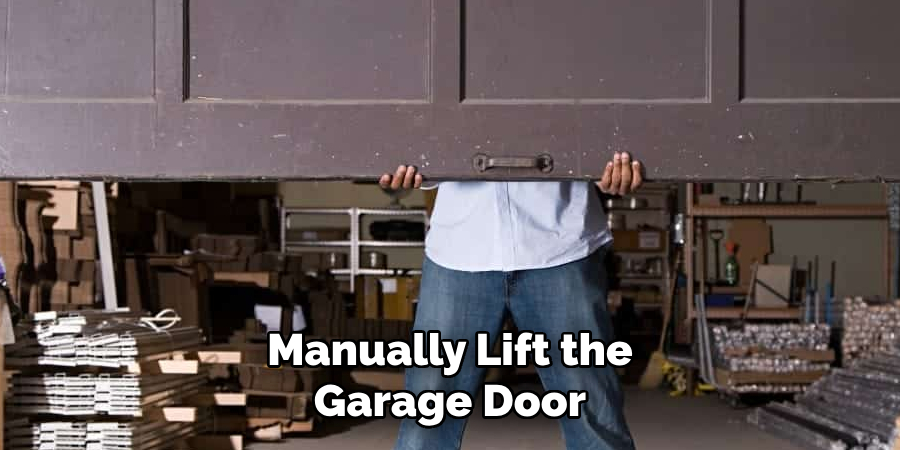
Step 3: Ensure the Door Stays Open: Test the door’s stability before moving vehicles or entering the garage. Make certain it remains safely open to avoid accidents and provide ease of access while you await professional repair for the broken cable.
Alternative Methods for Opening a Garage Door with a Broken Cable
A. Accessing the Garage Through an Alternate Entry
Find Another Door or Window: If your garage is connected to your home or has another entry point, such as a side door or window, you can use these to access the garage interior. Once inside, locate and pull the emergency release cord to disengage the door from the automatic opener.
B. Using a Lock-Picking Tool or Bump Key
Accessing the Emergency Release: In situations where the garage door features a manual lock, using a lock-picking tool or a bump key can provide access to release the emergency mechanism from outside. These tools empower you to unlock the door safely, albeit they require some skill.
Hiring a Professional Locksmith: If you don’t possess lock-picking tools or the expertise needed, hiring a professional locksmith is a prudent approach. A locksmith brings the necessary skills and tools to access the emergency release system without damaging the door or lock.
C. Drilling a Hole for Emergency Release Access
As a Last Resort: When all other methods are unfeasible and accessing the garage is essential, consider drilling a small hole above the location of the emergency release cord. Using a sturdy wire or hook, you can then pull the cord through the hole to disengage the lock. This should only be considered when other options are not viable, as it can cause damage to the door’s exterior.
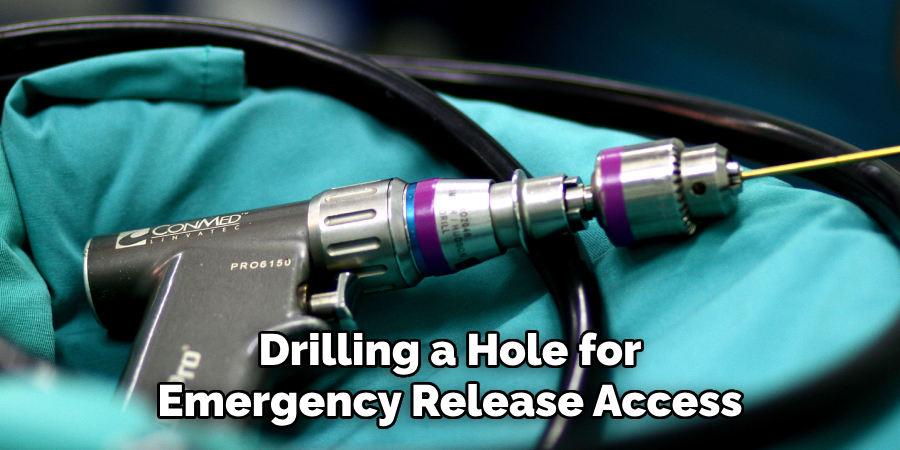
Troubleshooting Issues After Opening the Garage Door
Once you’ve managed to open your garage door with a broken cable, some issues may arise that require troubleshooting to ensure safe and smooth operation:
Door Feels Unstable or Won’t Stay Open:
- Check for Broken Springs: If the torsion springs appear damaged, they might need repair. These springs are crucial for balancing the door’s weight, and without their full function, the door can be unstable.
- Rebalance the Door: For a temporary solution, use clamps or other supports to stabilize and rebalance the door until a professional repair can be made.
Door Makes Grinding or Squeaking Noises:
- Inspect the Tracks: Examine the tracks for any obstructions or misaligned rollers that might be causing friction. Misaligned components can impair the door’s movement and create noise.
- Lubricate Moving Parts: Apply a suitable lubricant to the rollers and tracks to minimize friction and ease the door’s operation, providing a quieter experience.
Automatic Opener Not Responding:
- Re-engage the Opener: After manually handling the garage door, reconnect the automatic opener. This is done by pulling the emergency release cord back into position.
- Check the Opener’s Power: Verify that the garage door opener is powered. If there are any issues, consider resetting the power source as an initial step to get the opener working again.
Repairing a Broken Garage Door Cable
Why You Shouldn’t Attempt DIY Repairs
Garage door cables are critical components for safely lifting and lowering the door. These cables are under immense tension, and mishandling them can result in severe injury or property damage. Attempting DIY repairs without appropriate tools and skills can lead to further complications and hazardous outcomes. Therefore, it’s strongly advisable to leave the repair of these high-tension cables to trained professionals who can safely and effectively address the issue.
Hiring a Professional
Step 1: Contact a Garage Door Technician
Contact a reputable garage door repair service immediately after identifying a broken garage door cable. Professional technicians have the expertise and equipment required to replace the cables accurately and safely, minimizing risks and ensuring the longevity of your door’s operation.
Step 2: Temporary Measures
While awaiting the arrival of a technician, it’s crucial to manually secure the garage door to prevent it from suddenly sliding down. Avoid using the automatic opener during this time, as the lack of cable support could exacerbate the damage or create unsafe conditions. By taking these precautions, you can ensure the safety of your home and family until a professional can provide a permanent fix.
Preventing Future Garage Door Cable Breaks
Regular Inspection: Conduct thorough inspections of the garage door cables every few months, looking for signs of wear, rust, or fraying. This proactive approach can identify potential issues before they become critical.
Lubrication: Use a silicone-based lubricant on the cables and all moving parts, such as rollers and tracks. This will help prevent rust and reduce overall wear, prolonging the life of your garage door system.
Torsion Spring Maintenance: Schedule regular professional checks and adjustments of the torsion springs. Ensuring they are not overstressed is crucial, as excessive tension can lead to cable failures.
Avoid Overuse of the Door: Try to limit the frequency of opening and closing the garage door in a short period. Excessive use can expedite the wear on the cables, leading to premature breaks. By moderating door usage, you help ensure longevity and reliable operation.
Safety Precautions When Handling a Broken Garage Door
Use Protective Gear: Before approaching a garage door with a broken cable, ensure you are wearing heavy-duty gloves and safety glasses. This protective gear is vital to shield yourself from potential injuries caused by sharp edges or sudden movements of the door components.
Stay Clear of the Door: It is imperative to avoid standing directly beneath the door or its path while attempting manual operations. The door can become unstable, and staying clear reduces the risk of injury in case the door falls.
Call a Professional for Major Repairs: If the garage door is stuck or feels too heavy to move, refrain from forcing it open. This action could lead to further damage or personal injury. Contact a qualified technician to handle the repairs safely and efficiently.
Know When to Stop: Should any aspect of the process appear hazardous or the door feels excessively heavy, discontinue your efforts immediately. Prioritize your safety and consult a professional to prevent accidents.
Conclusion
When faced with the challenge of “how to open garage door with broken cable from outside,” it’s essential to prioritize safety and precision. Begin by utilizing the emergency release mechanism to disengage the automatic opener, and then proceed with caution through the manual operation of the door. Resorted to as a temporary solution, this method allows access while awaiting permanent repairs.
However, it’s imperative to understand the importance of seeking professional assistance. Broken cables pose significant risks due to the tension they bear, necessitating the expertise of a trained technician to restore full functionality safely. Attempting risky DIY repairs can lead to further complications and injuries. Remember, while opening the door manually in emergencies is possible, professional intervention ensures your garage door’s longevity and safe operation. By following the correct procedures and prioritizing professional repairs, you maintain both safety and convenience in your home.
About
Safety Fic is a distinguished figure in the world of Diy design, with a decade of expertise creating innovative and sustainable Diy solutions. His professional focus lies in merging traditional craftsmanship with modern manufacturing techniques, fostering designs that are both practical and environmentally conscious. As the author of diy, Safety Fic delves into the art and science of Safety Fic-making, inspiring artisans and industry professionals alike.
Education RMIT University
(Melbourne, Australia) Associate Degree in Design (Safety Fic) Focus on sustainable design, industry-driven projects, and practical craftsmanship. Gained hands-on experience with traditional and digital manufacturing tools, such as CAD and CNC software.
Nottingham Trent University
(United Kingdom) Bachelor’s in diyfastly.com and Product Design (Honors) Specialized in product design with a focus on blending creativity with production techniques. Participated in industry projects, working with companies like John Lewis and Vitsoe to gain real-world insights.
Publications and Impact
In diy, Safety Fic his insights on indoor design processes, materials, and strategies for efficient production. His writing bridges the gap between artisan knowledge and modern industry needs, making it a must-read for both budding designers and seasoned professionals.
